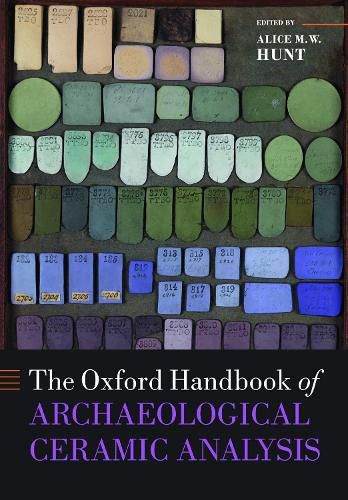Readings Newsletter
Become a Readings Member to make your shopping experience even easier.
Sign in or sign up for free!
You’re not far away from qualifying for FREE standard shipping within Australia
You’ve qualified for FREE standard shipping within Australia
The cart is loading…






The Oxford Handbook of Archaeological Ceramic Analysis draws together topics and methodologies essential for the socio-cultural, mineralogical, and geochemical analysis of archaeological ceramic. Ceramic is one of the most complex and ubiquitous archaeomaterials in the archaeological record: it occurs around the world and through time in almost every culture and context, from building materials and technological installations to utilitarian wares and votive figurines. For more than 100 years, archaeologists have used ceramic analysis to answer complex questions about economy, subsistence, technological innovation, social organization, and dating. The volume is structured around the themes ‘Research design and data analysis’, ‘Foundational concepts’, ‘Evaluating ceramic provenance’, ‘Investigating ceramic manufacture’, ‘Assessing vessel function’, and ‘Dating ceramic assemblages’. It provides a common vocabulary and offers practical tools and guidelines for ceramic analysis using techniques and methodologies ranging from network analysis and typology to rehydroxylation dating and inductively coupled plasma mass spectrometry. Each chapter provides the theoretical background and practical guidelines, such as cost and destructiveness of analysis, for each technique, as well as detailed case studies illustrating the application and interpretation of analytical data for answering anthropological questions.
$9.00 standard shipping within Australia
FREE standard shipping within Australia for orders over $100.00
Express & International shipping calculated at checkout
The Oxford Handbook of Archaeological Ceramic Analysis draws together topics and methodologies essential for the socio-cultural, mineralogical, and geochemical analysis of archaeological ceramic. Ceramic is one of the most complex and ubiquitous archaeomaterials in the archaeological record: it occurs around the world and through time in almost every culture and context, from building materials and technological installations to utilitarian wares and votive figurines. For more than 100 years, archaeologists have used ceramic analysis to answer complex questions about economy, subsistence, technological innovation, social organization, and dating. The volume is structured around the themes ‘Research design and data analysis’, ‘Foundational concepts’, ‘Evaluating ceramic provenance’, ‘Investigating ceramic manufacture’, ‘Assessing vessel function’, and ‘Dating ceramic assemblages’. It provides a common vocabulary and offers practical tools and guidelines for ceramic analysis using techniques and methodologies ranging from network analysis and typology to rehydroxylation dating and inductively coupled plasma mass spectrometry. Each chapter provides the theoretical background and practical guidelines, such as cost and destructiveness of analysis, for each technique, as well as detailed case studies illustrating the application and interpretation of analytical data for answering anthropological questions.